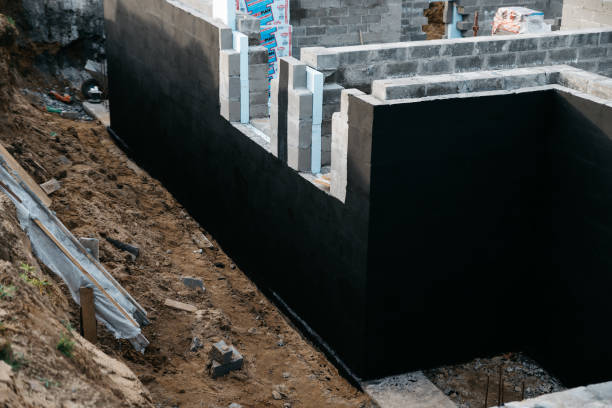Introduction
Water damage can be a serious threat to any property, especially when it affects its foundation. Over time, factors like heavy rainfall, poor drainage, and natural soil settling can weaken the structural integrity of a building, leading to cracks and leaks. To safeguard your property from such issues, two essential services come into play – waterproofing and underpinning. In this article, we will explore the importance and benefits of these services in maintaining a solid and protected foundation.
Waterproofing: Shielding Your Property from Water Intrusion
Waterproofing is a preventive measure that involves treating surfaces and structures to resist the penetration of water. It is particularly vital in regions with high rainfall, flood-prone areas, or properties situated below ground level. Here’s why waterproofing should be a top priority for any property owner:
a. Foundation Protection: One of the primary purposes of waterproofing is to safeguard the foundation from water seepage. When water infiltrates the foundation, it can lead to erosion, weakening the structure and causing cracks.
b. Basement Waterproofing: Basements are susceptible to water ingress due to their below-ground location. Waterproofing basement walls and floors prevents water from seeping in and causing dampness, mold growth, and structural damage.
c. Wall and Roof Protection: Waterproofing exterior walls and roofs ensures that rainwater doesn’t penetrate the building’s envelope. This protection is crucial in preserving the integrity of the building’s structure and preventing potential interior damage.
d. Mold Prevention: Damp and moist environments are breeding grounds for mold and mildew. Waterproofing helps maintain a dry and mold-free interior, promoting a healthy living or working environment.
Underpinning: Strengthening the Foundation
Underpinning is a foundation repair technique used to strengthen and stabilize existing foundations. It becomes necessary when a building’s foundation is compromised due to various factors, such as soil subsidence, inadequate support, or structural modifications. Here are the key benefits of underpinning:
a. Foundation Restoration: Underpinning addresses foundation settlement issues by providing additional support. It involves extending the foundation to a more stable soil layer, effectively preventing further settlement and structural damage.
b. Additional Load Bearing: Underpinning allows the foundation to bear additional loads, making it possible to add extra floors or accommodate heavier structures.
c. Resolving Uneven Foundation: When parts of a building settle at different rates, it can lead to uneven floors and structural imbalances. Underpinning helps level the foundation and distribute the load evenly.
d. Cost-Effectiveness: Underpinning can be a cost-effective solution compared to demolishing and rebuilding a compromised structure.
Conclusion
Waterproofing and underpinning services are crucial for ensuring the longevity and stability of any property. By investing in these preventative measures, property owners can protect their buildings from water damage, foundation settlement, and associated structural problems. Whether you own a residential or commercial property, taking proactive steps to address these issues can save you from significant repair costs and maintain a safe and habitable environment. Remember to consult with qualified professionals to assess your property’s specific needs and recommend the most suitable waterproofing and underpinning solutions.
You may also like
-
Hiring An Architect To Design Your Home
-
Winter is Coming: A Kansas Building Manager’s Guide to Preventing Frozen Pipes with Commercial Plumbing Services in Kansas
-
How to Install an Artificial Hedge Easily
-
Get Exclusive Diwali Offers on Whirlpool Double Door Refrigerators
-
Who is Best Pipe and Joint System Supplier in Malaysia

